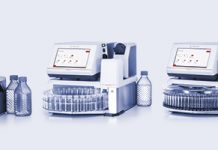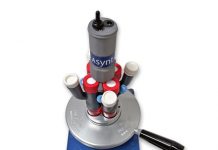Many industrial production processes use electroless nickel (EN) plating to prevent wear and corrosion. In the semiconductor industry, EN plating is an essential production step, where the ENIG (electroless nickel, immersion gold) and ENEPIG (electroless nickel, electroless palladium, immersion gold) processes are used for the PCB production. Stabilisers play an important role in electroless nickel plating solutions as they control the plating rate and prevent uncontrolled plate out (decomposition) of the bath. However, it is important to hold the stabiliser concentration at an optimal level. Too low stabiliser levels negatively affect the deposition rate and bath stability. Too high levels can poison the deposition at the edges or stop the plating reaction. Monitoring of the stabiliser concentration is therefore essential for an optimal plating process.
Historically, lead has been used as a stabiliser in electroless nickel baths. Because of restrictions, such as RoHS, on heavy metals in consumer goods, and particularly electronics, alternative stabilisers have become more popular. Common alternatives are antimony, bismuth, or iodate. Anodic stripping voltammetry/polarography is ideal to determine the concentration of all three stabilisers, even in the low mg/L range. Other bath components do not interfere with this selective analysis.
With an 884 Professional VA Analyser from Metrohm, determination of the stabiliser concentration is straightforward. Samples can be directly measured after dilution. To learn more about the method, download the free Application Notes below:
> Lead in electroless nickel baths










